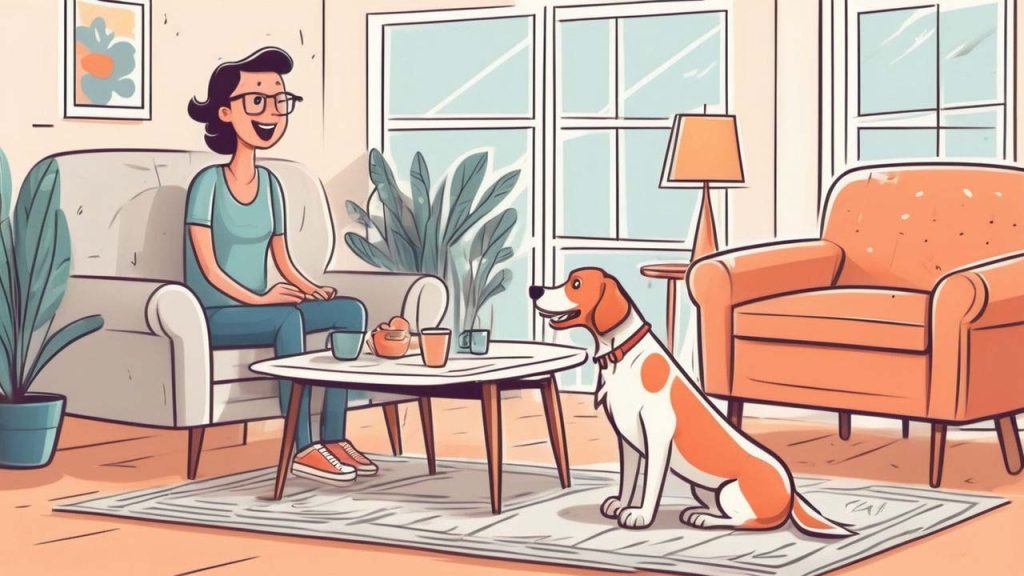In-Home Dog Sitting: The Best Care for Your Pet at Home
Leaving your dog behind when traveling or handling a busy schedule can be stressful for both you and your pet. Many pet owners face the dilemma of finding reliable care that won’t disrupt their dog’s routine. That’s where in-home dog sitting comes in as a great solution. Instead of taking your dog to a boarding kennel or daycare, in-home sitting allows your dog to stay in the comfort of their own environment, with a trusted sitter providing personalized care.
In this article, we’ll dive into the benefits of in-home dog sitting, how to choose the best sitter, and what to expect during the process. With in-home dog sitting, you can travel with peace of mind knowing your furry friend is getting one-on-one care without leaving their familiar space.
Why Choose In-Home Dog Sitting?
There are several reasons why in-home dog sitting is becoming a popular choice among dog owners. The key advantage is that it provides personalized attention in your dog’s own home, which reduces stress and maintains their daily routine.
1. Comfort in a Familiar Environment
Dogs are creatures of habit and thrive on routine. Staying in their own home with familiar sights, sounds, and smells helps reduce the anxiety that can come with being left behind. In-home dog sitting eliminates the need to introduce your pet to a new environment, which can be overwhelming for some dogs, especially those prone to separation anxiety or fear of new places.
2. Personalized, One-on-One Attention
Unlike a crowded boarding kennel, where your dog might compete for attention, an in-home sitter provides your dog with one-on-one care. This ensures that your dog’s specific needs are met, from regular feeding and walks to playtime and cuddles. Whether your dog has special dietary requirements, medications, or simply enjoys a particular routine, an in-home sitter will tailor their services to match.
3. Less Exposure to Illnesses
Boarding kennels and doggy daycares often house multiple pets at once, increasing the risk of your dog contracting illnesses like kennel cough or parasites. With in-home sitting, your dog stays safely in their own space, avoiding the risk of exposure to other dogs and their potential health issues.
4. Continued Routine and Habits
Maintaining your dog’s routine is crucial for their well-being, especially when they’re separated from you. In-home dog sitting allows your dog to follow their regular schedule, from feeding times to walks and playtime. This stability helps minimize stress, making the time away from you more comfortable for your pet.

How to Find the Right In-Home Dog Sitter
Choosing the right dog sitter is important to ensure your pet’s safety and happiness. Here are some steps to help you find the perfect in-home sitter for your dog:
1. Ask for Recommendations and Read Reviews
Start by asking friends, family, or your vet for recommendations. Online platforms like Rover, Wag!, or local pet care directories also offer access to experienced sitters. Be sure to read reviews and testimonials from other pet owners who have used the sitter’s services. This will give you insight into their reliability, experience, and how well they interact with pets.
2. Conduct a Meet-and-Greet
Before hiring a sitter, schedule a meet-and-greet at your home. This allows you to introduce the sitter to your dog, see how they interact, and ensure there’s a good connection. It’s also an opportunity to discuss your dog’s routine, personality, and any special instructions you have for the sitter. Pay attention to your dog’s behavior—do they seem comfortable and relaxed around the sitter?
3. Verify Experience and Training
Make sure the sitter has experience with dogs and understands how to handle different breeds, sizes, and temperaments. If your dog has special needs, such as medical issues or behavioral challenges, ask whether the sitter has experience managing these. Some sitters also have pet first aid certification, which is a valuable bonus in case of emergencies.
4. Ensure Clear Communication
Good communication is key to ensuring your dog receives the best care. Discuss how often you’d like updates, including photos and messages, while you’re away. A responsible sitter will keep you informed about your dog’s well-being, including their behavior, eating habits, and any concerns.
5. Check for Insurance and Bonding
Reputable in-home dog sitters are often insured and bonded, which protects both you and the sitter in case of accidents or property damage. Ask for proof of insurance and be sure you’re comfortable with their level of coverage before making a final decision.
What to Expect from In-Home Dog Sitting
In-home dog sitting offers several services that go beyond just feeding and walking your dog. Here’s what you can expect from a quality in-home dog sitter:
1. Customized Care
In-home dog sitters provide customized care based on your dog’s routine and preferences. This includes following your dog’s usual feeding schedule, administering medications, and ensuring they get plenty of exercise and playtime. Your sitter will also spend time engaging with your dog, offering companionship to prevent loneliness while you’re away.
2. Home Security Benefits
An added benefit of in-home dog sitting is that your home is looked after as well. Many sitters will bring in mail, water plants, and ensure the home looks occupied, which can be a deterrent to burglars while you’re away. This extra layer of security adds value to in-home pet sitting services.
3. Daily Updates and Photos
Most professional sitters provide regular updates, sending photos and messages to reassure you that your dog is happy and healthy. This allows you to feel connected to your pet and know they’re in good hands.
4. Overnight Stays
In-home dog sitting often includes overnight stays, where the sitter stays in your home to provide round-the-clock care. This is especially beneficial for puppies, senior dogs, or dogs with medical needs that require overnight attention.
Preparing Your Home for In-Home Dog Sitting
To ensure your dog sitter has everything they need to care for your pet, it’s important to prepare your home ahead of time. Here’s how to get started:
1. Create a Detailed Care Sheet
Write down your dog’s daily routine, including feeding times, portion sizes, walk schedules, and any medication instructions. Include important information about your dog’s behavior, favorite toys, and any quirks they may have. The more information you provide, the easier it will be for the sitter to keep your dog happy and comfortable.
2. Provide Contact Information
Leave clear contact information for your vet, an emergency contact, and any neighbors who may be able to assist in case of an emergency. This ensures that the sitter can act quickly if any issues arise.
3. Stock Up on Supplies
Make sure you have enough food, treats, medications, and waste bags to last through the duration of your trip. Show the sitter where these items are stored, along with any cleaning supplies they may need for quick cleanups.
4. Make Key Areas Accessible
Make it easy for the sitter to access everything they need by organizing your home ahead of time. Ensure that your dog’s food, leash, toys, and bedding are easily accessible. Also, point out where the sitter can find extra towels, cleaning supplies, or anything else they might need during their stay.
Why In-Home Dog Sitting Is Better Than Boarding
While boarding facilities are a common choice, in-home dog sitting provides several distinct advantages over traditional kennels. Here’s why many pet owners prefer in-home sitting:
1. Lower Stress for Your Dog
Staying in their own home is far less stressful for dogs than being placed in a new, noisy environment with unfamiliar animals. In-home sitting allows your dog to remain in their familiar surroundings, follow their routine, and avoid the anxiety that often comes with boarding.
2. No Exposure to Other Animals
At boarding facilities, dogs are exposed to other pets, increasing the risk of contracting illnesses like kennel cough or parasites. In-home dog sitting eliminates this risk, as your dog is the sole focus of attention and care.
3. Tailored Attention
In-home sitters provide undivided attention, unlike boarding kennels where staff may have to care for multiple dogs at once. Your dog receives personalized care, and the sitter can cater to their individual needs, whether it’s extra playtime, special meals, or medication administration.
FAQs About In-Home Dog Sitting
How much does in-home dog sitting cost?
- The cost of in-home dog sitting varies based on the sitter’s experience, location, and services offered. On average, you can expect to pay $25 to $75 per night.
Is in-home dog sitting safe?
- Yes, as long as you choose a reputable, experienced sitter. Be sure to check reviews, meet the sitter in advance, and ensure they’re insured and bonded.
How do I know if my dog will like the sitter?
- A meet-and-greet allows you to introduce your dog to the sitter. During this meeting, observe how your dog interacts with them and whether they seem comfortable and at ease.
Can in-home dog sitters handle medical needs?
- Many in-home dog sitters are experienced in administering medications and managing special needs. Be sure to communicate any health requirements in advance and choose a sitter who has experience with these tasks.
What if I need last-minute dog sitting?
- Some sitters offer last-minute bookings, but it’s best to plan ahead when possible. If you’re in a bind, apps like Rover or Wag! can help you find available sitters on short notice.


